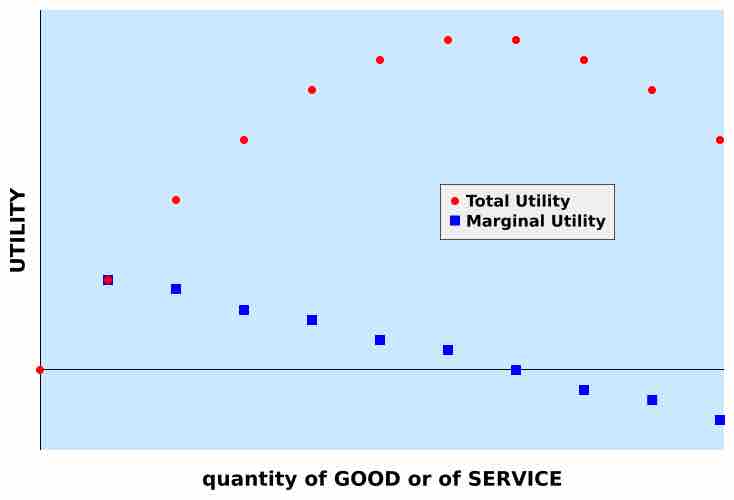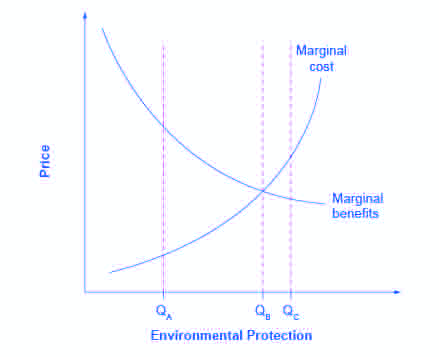When individuals make decisions, they do so by looking at the additional cost and benefit of the decision. The cost or benefit of the single decision is called the marginal cost or the marginal benefit. This is different from the total or average: net marginal benefit (marginal benefit minus marginal cost) is the amount that total benefit will change due to the single decision. For example, if the cost of making 9 pieces of pizza is $90 and the cost of making 10 pieces is $110, the marginal cost of producing the tenth piece of pizza is $20. In theory, individuals will only choose an option if marginal benefit exceeds marginal cost.

Marginal and Total Utility
Marginal utility is the amount that a certain action will change total utility. Individuals use net marginal utility to make decisions.
Let's take an example. Suppose you are buying a car and have three choices:
- Car A, which costs $10,000
- Car B, which costs $12,000
- Car C, which costs $15,000
The prices represent the marginal costs of each car; purchasing the car will add the cost of the car to your total costs. Also suppose Car A provides you $15,000 worth of utility, Car B provides $15,000, and Car C provides $25,000. Those utilities, in dollar terms, are the marginal benefit of each car.
In order to make the decision, you look at the marginal cost and marginal benefit of each car. By subtracting the cost from the benefit, Car A offers $5,000 of marginal benefit, Car B offers $3,000, and Car C offers $10,000. Obviously, Car C is the best choice because, at the margins, it offers the most benefit to you.
Note that you are concerned not with your total or average cost and benefit (assuming no resource or other external restrictions), but with the marginal cost and benefit. As a decision maker, you want to know how much the decision will change your current state, so you look at the margins, not the overall picture. That is not to say that things like the total cost are unimportant, but that, assuming there are enough resources, individuals will look at the marginal change each option will provide to his/her life or to the firm and chose the one with the greatest net marginal benefit.
Marginal Benefits and Costs for Pollution
The tools of marginal analysis can illustrate the marginal costs and the marginal benefits of reducing pollution. When the quantity of environmental protection is low (quantity
However, as environmental protection increases, the cheap and easy ways of reducing pollution decrease, and pollution can only be reduced with costly methods. As environmental protection increases, the largest marginal benefits are achieved first, followed by decreasing marginal benefits. As the quantity of environmental protection increases to

Marginal Costs and Marginal Benefits of Environmental Protection
Reducing pollution is costly—resources must be sacrificed. The marginal costs of reducing pollution are generally increasing, because the least expensive and easiest reductions can be made first, leaving the more expensive methods for later. The marginal benefits of reducing pollution are generally declining, because the steps that provide the greatest benefit can be taken first, and steps that provide less benefit can wait until later.